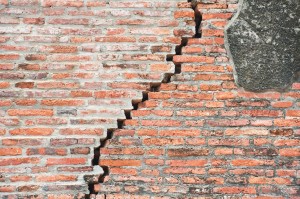 With a series of earthquakes rumbling Southern California in recent weeks (and the massive shakers off the coast of Chile), I’ve had my thoughts turn to finally putting together an earthquake kit for the family. But what exactly does one put into one of these? Here are some basic items to get you started.
With a series of earthquakes rumbling Southern California in recent weeks (and the massive shakers off the coast of Chile), I’ve had my thoughts turn to finally putting together an earthquake kit for the family. But what exactly does one put into one of these? Here are some basic items to get you started.
Food & water – The basics. Ready.gov suggests having “one gallon of water per person per day for at least three days, for drinking and sanitation,”and enough shelf-stable food to last each person three days. Think food items like light and portable high-calorie bars that can pack the most punch for their size. And don’t forget things like extra formula and bottles if you have a baby in the family.
Flashlights – The reason for this is obvious. And don’t forget to pack extra batteries
Solar Blankets – Pack one for each member of the family. These special blankets, which can be found on Amazon, will protect you and your family from the natural elements and can b e used for a variety of needs.
Battery-powered or hand crank radio – In case cell towers or the like go down, these will be essential in hearing the latest news and updates.
Whistle – Another thing to pack one for each member of the family, so that each person can easily signal for help if needed.
Dust masks – In the case of a catastrophic earthquake, there will be lots of dust and other contaminants in the air from debris and rubble. Make sure to pack one for each member of the family to protect their lungs.
First aid kit – Again, an obvious addition, make sure you splurge on the most comprehensive first-aid kit sine you never know exactly what you may need.
Essential medication – Does anyone in your family take regularly prescribed medications? If so, make sure you have an extra supply as backup packed away.
Small tools – Like a knife, razor blades and can opener.
Obviously the list could go on and on, but these are just a few items to get your shopping list going. Being prepared goes a long way.

















